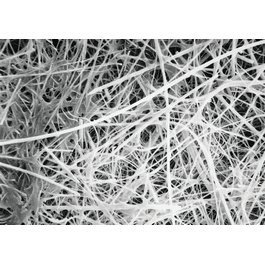Shop
Showing 185501–185550 of 260920 results
-

OSI-420-D4, Free Base (Desmethyl Erlotinib-D4)
$442.46 Add to cart View Product DetailsMolecular Formula : C21 2H4 H17 N3 O4
-

OSI-420-d4, Free Base (Desmethyl Erlotinib-d4)
$3,419.81 Add to cart View Product DetailsMolecular Formula : C21 2H4 H17 N3 O4
-

OSI-420, Free Base (Desmethyl Erlotinib)
$307.91 Add to cart View Product DetailsMolecular Formula : C21 H21 N3 O4
-

OSI-420, Free Base (Desmethyl Erlotinib)
$2,390.85 Add to cart View Product DetailsMolecular Formula : C21 H21 N3 O4
-

Osilodrostat
$301.01 Add to cart View Product DetailsMolecular Formula : C13H10FN3
-

Osilodrostat
$1,376.55 Add to cart View Product DetailsMolecular Formula : C13H10FN3
-

Osilodrostat
$2,402.06 Add to cart View Product DetailsMolecular Formula : C13H10FN3
-
Osimertinib N’-Oxide
$429.53 Add to cart View Product DetailsMolecular Formula : C28H33N7O3
-
Osimertinib-13CD3
$293.25 Add to cart View Product DetailsMolecular Formula : C2713CH30D3N7O2
-
Osimertinib-13CD3
$644.29 Add to cart View Product DetailsMolecular Formula : C2713CH30D3N7O2
-
Osimertinib-13CD3
$2,284.76 Add to cart View Product DetailsMolecular Formula : C2713CH30D3N7O2
-

OsIRE1 Rabbit pAb
$119.14 Add to cart View Product DetailsPolyclonal Antibodies
-

OsIRE1 Rabbit pAb
$296.24 Add to cart View Product DetailsPolyclonal Antibodies
-

OsLIC1 Rabbit pAb
$296.24 Add to cart View Product DetailsPolyclonal Antibodies
-

OsLIC1 Rabbit pAb
$119.14 Add to cart View Product DetailsPolyclonal Antibodies
-

OSM (209aa), Human
$2,018.25 Add to cart View Product DetailsOncostatin M (OSM) is a multifunctional cytokine, and belongs to Interleukin-6 (IL-6) subfamily, which also includes IL-11, leukemia inhibitory factor (LIF), ciliary neurotropic factor, cardiotrophin-1, and novel neurotropin-1. In vivo, OSM is secreted from activated T cells, monocytes, neutrophils, and endothelial cells. OSM is related to LIF, and shares a receptor with LIF in human. Human OSM can bind to gp130 and recruit OSM Receptor β or LIF Receptor β to form a ternary complex. OSM stimulates the growth of different types of cells, including megakaryocytes, fibroblasts, vascular endothelial cells, and T cells. OSM inhibits the proliferation of several cancer cell lines, such as solid tissue tumor cells, lung cancer cells, melanoma cells, and breast cancer cells.
-

OSM (209aa), Human
$86.25 Add to cart View Product DetailsOncostatin M (OSM) is a multifunctional cytokine, and belongs to Interleukin-6 (IL-6) subfamily, which also includes IL-11, leukemia inhibitory factor (LIF), ciliary neurotropic factor, cardiotrophin-1, and novel neurotropin-1. In vivo, OSM is secreted from activated T cells, monocytes, neutrophils, and endothelial cells. OSM is related to LIF, and shares a receptor with LIF in human. Human OSM can bind to gp130 and recruit OSM Receptor β or LIF Receptor β to form a ternary complex. OSM stimulates the growth of different types of cells, including megakaryocytes, fibroblasts, vascular endothelial cells, and T cells. OSM inhibits the proliferation of several cancer cell lines, such as solid tissue tumor cells, lung cancer cells, melanoma cells, and breast cancer cells.
-

OSM (209aa), Human
$271.69 Add to cart View Product DetailsOncostatin M (OSM) is a multifunctional cytokine, and belongs to Interleukin-6 (IL-6) subfamily, which also includes IL-11, leukemia inhibitory factor (LIF), ciliary neurotropic factor, cardiotrophin-1, and novel neurotropin-1. In vivo, OSM is secreted from activated T cells, monocytes, neutrophils, and endothelial cells. OSM is related to LIF, and shares a receptor with LIF in human. Human OSM can bind to gp130 and recruit OSM Receptor β or LIF Receptor β to form a ternary complex. OSM stimulates the growth of different types of cells, including megakaryocytes, fibroblasts, vascular endothelial cells, and T cells. OSM inhibits the proliferation of several cancer cell lines, such as solid tissue tumor cells, lung cancer cells, melanoma cells, and breast cancer cells.
-

OSM (227aa), Human
$2,018.25 Add to cart View Product DetailsOncostatin M (OSM) is a multifunctional cytokine, and belongs to Interleukin-6 (IL-6) subfamily, including IL-11, leukemia inhibitory factor (LIF), ciliary neurotropic factor, cardiotrophin-1, and novel neurotropin-1. In vivo, OSM is secreted from activated T cells, monocytes, neutrophils, and endothelial cells. OSM is related to LIF, and share a receptor with LIF in human. Human OSM can bind to gp130 and recruit OSM Receptor β or LIF Receptor β to form a ternary complex. OSM stimulates the growth of different types of cells, including megakaryocytes, fibroblasts, vascular endothelial cells, and T cells. On the other hand, OSM inhibits the proliferation of several cancer cell lines, such as solid tissue tumor cells, lung cancer cells, melanoma cells, and breast cancer cells.
-

OSM (227aa), Human
$86.25 Add to cart View Product DetailsOncostatin M (OSM) is a multifunctional cytokine, and belongs to Interleukin-6 (IL-6) subfamily, including IL-11, leukemia inhibitory factor (LIF), ciliary neurotropic factor, cardiotrophin-1, and novel neurotropin-1. In vivo, OSM is secreted from activated T cells, monocytes, neutrophils, and endothelial cells. OSM is related to LIF, and share a receptor with LIF in human. Human OSM can bind to gp130 and recruit OSM Receptor β or LIF Receptor β to form a ternary complex. OSM stimulates the growth of different types of cells, including megakaryocytes, fibroblasts, vascular endothelial cells, and T cells. On the other hand, OSM inhibits the proliferation of several cancer cell lines, such as solid tissue tumor cells, lung cancer cells, melanoma cells, and breast cancer cells.
-

OSM (227aa), Human
$271.69 Add to cart View Product DetailsOncostatin M (OSM) is a multifunctional cytokine, and belongs to Interleukin-6 (IL-6) subfamily, including IL-11, leukemia inhibitory factor (LIF), ciliary neurotropic factor, cardiotrophin-1, and novel neurotropin-1. In vivo, OSM is secreted from activated T cells, monocytes, neutrophils, and endothelial cells. OSM is related to LIF, and share a receptor with LIF in human. Human OSM can bind to gp130 and recruit OSM Receptor β or LIF Receptor β to form a ternary complex. OSM stimulates the growth of different types of cells, including megakaryocytes, fibroblasts, vascular endothelial cells, and T cells. On the other hand, OSM inhibits the proliferation of several cancer cell lines, such as solid tissue tumor cells, lung cancer cells, melanoma cells, and breast cancer cells.
-

OSM, Mouse
$2,018.25 Add to cart View Product DetailsOncostatin M (OSM) is a multifunctional cytokine, and belongs to Interleukin-6 (IL-6) subfamily, which also includes IL-11, leukemia inhibitory factor (LIF), ciliary neurotropic factor, cardiotrophin-1, and novel neurotropin-1. In vivo, OSM is secreted from activated T cells, monocytes, neutrophils, and endothelial cells. OSM is related to LIF, and shares a receptor with LIF in human. Human OSM can bind to gp130 and recruit OSM Receptor β or LIF Receptor β to form a ternary complex. OSM stimulates the growth of different types of cells, including megakaryocytes, fibroblasts, vascular endothelial cells, and T cells. OSM inhibits the proliferation of several cancer cell lines, such as solid tissue tumor cells, lung cancer cells, melanoma cells, and breast cancer cells.
-

OSM, Mouse
$86.25 Add to cart View Product DetailsOncostatin M (OSM) is a multifunctional cytokine, and belongs to Interleukin-6 (IL-6) subfamily, which also includes IL-11, leukemia inhibitory factor (LIF), ciliary neurotropic factor, cardiotrophin-1, and novel neurotropin-1. In vivo, OSM is secreted from activated T cells, monocytes, neutrophils, and endothelial cells. OSM is related to LIF, and shares a receptor with LIF in human. Human OSM can bind to gp130 and recruit OSM Receptor β or LIF Receptor β to form a ternary complex. OSM stimulates the growth of different types of cells, including megakaryocytes, fibroblasts, vascular endothelial cells, and T cells. OSM inhibits the proliferation of several cancer cell lines, such as solid tissue tumor cells, lung cancer cells, melanoma cells, and breast cancer cells.
-

OSM, Mouse
$271.69 Add to cart View Product DetailsOncostatin M (OSM) is a multifunctional cytokine, and belongs to Interleukin-6 (IL-6) subfamily, which also includes IL-11, leukemia inhibitory factor (LIF), ciliary neurotropic factor, cardiotrophin-1, and novel neurotropin-1. In vivo, OSM is secreted from activated T cells, monocytes, neutrophils, and endothelial cells. OSM is related to LIF, and shares a receptor with LIF in human. Human OSM can bind to gp130 and recruit OSM Receptor β or LIF Receptor β to form a ternary complex. OSM stimulates the growth of different types of cells, including megakaryocytes, fibroblasts, vascular endothelial cells, and T cells. OSM inhibits the proliferation of several cancer cell lines, such as solid tissue tumor cells, lung cancer cells, melanoma cells, and breast cancer cells.
-

OSM, Mouse(HEK 293-expressed)
$2,018.25 Add to cart View Product DetailsOncostatin M (OSM) is a multifunctional cytokine, and belongs to Interleukin-6 (IL-6) subfamily, which also includes IL-11, leukemia inhibitory factor (LIF), ciliary neurotropic factor, cardiotrophin-1, and novel neurotropin-1. In vivo, OSM is secreted from activated T cells, monocytes, neutrophils, and endothelial cells. OSM is related to LIF, and shares a receptor with LIF in human. Human OSM can bind to gp130 and recruit OSM Receptor β or LIF Receptor β to form a ternary complex. OSM stimulates the growth of different types of cells, including megakaryocytes, fibroblasts, vascular endothelial cells, and T cells. OSM inhibits the proliferation of several cancer cell lines, such as solid tissue tumor cells, lung cancer cells, melanoma cells, and breast cancer cells.
-

OSM, Mouse(HEK 293-expressed)
$86.25 Add to cart View Product DetailsOncostatin M (OSM) is a multifunctional cytokine, and belongs to Interleukin-6 (IL-6) subfamily, which also includes IL-11, leukemia inhibitory factor (LIF), ciliary neurotropic factor, cardiotrophin-1, and novel neurotropin-1. In vivo, OSM is secreted from activated T cells, monocytes, neutrophils, and endothelial cells. OSM is related to LIF, and shares a receptor with LIF in human. Human OSM can bind to gp130 and recruit OSM Receptor β or LIF Receptor β to form a ternary complex. OSM stimulates the growth of different types of cells, including megakaryocytes, fibroblasts, vascular endothelial cells, and T cells. OSM inhibits the proliferation of several cancer cell lines, such as solid tissue tumor cells, lung cancer cells, melanoma cells, and breast cancer cells.
-

OSM, Mouse(HEK 293-expressed)
$271.69 Add to cart View Product DetailsOncostatin M (OSM) is a multifunctional cytokine, and belongs to Interleukin-6 (IL-6) subfamily, which also includes IL-11, leukemia inhibitory factor (LIF), ciliary neurotropic factor, cardiotrophin-1, and novel neurotropin-1. In vivo, OSM is secreted from activated T cells, monocytes, neutrophils, and endothelial cells. OSM is related to LIF, and shares a receptor with LIF in human. Human OSM can bind to gp130 and recruit OSM Receptor β or LIF Receptor β to form a ternary complex. OSM stimulates the growth of different types of cells, including megakaryocytes, fibroblasts, vascular endothelial cells, and T cells. OSM inhibits the proliferation of several cancer cell lines, such as solid tissue tumor cells, lung cancer cells, melanoma cells, and breast cancer cells.
-

OsMADS1 Rabbit pAb
$296.24 Add to cart View Product DetailsPolyclonal Antibodies
-

OsMADS1 Rabbit pAb
$119.14 Add to cart View Product DetailsPolyclonal Antibodies
-

OsMADS15 Rabbit pAb
$119.14 Add to cart View Product DetailsPolyclonal Antibodies
-

OsMADS15 Rabbit pAb
$296.24 Add to cart View Product DetailsPolyclonal Antibodies
-

OsMADS57 Rabbit pAb
$296.24 Add to cart View Product DetailsPolyclonal Antibodies
-

OsMADS57 Rabbit pAb
$119.14 Add to cart View Product DetailsPolyclonal Antibodies
-

Osmium Tetroxide, (4 Percent in Water)
$153.90 Add to cart View Product DetailsOsmium Tetroxide, (4 Percent in Water)
-

OsMKK4 Rabbit pAb
$119.14 Add to cart View Product DetailsPolyclonal Antibodies
-

OsMKK4 Rabbit pAb
$296.24 Add to cart View Product DetailsPolyclonal Antibodies
-

Osmonics Magna Nitrocellulose Supported Transfer Membranes, Roll, 0.22 um pore size, 30 cm x 3 m
$319.69 Add to cart View Product DetailsOsmonics Magna Nitrocellulose Supported Transfer Membranes, Roll, 0.22 um pore size, 30 cm x 3 m
-

Osmonics NitroPure Internally-Supported Pure Nitrocellulose Transfer Membranes, Sheets – 0.22 um pore size, Dimensions (W x L): 30 x 50 cm; Transfer membranes
$266.21 Add to cart View Product DetailsOsmonics NitroPure Internally-Supported Pure Nitrocellulose Transfer Membranes, Sheets – 0.22 um pore size, Dimensions (W x L): 30 x 50 cm; Transfer membranes
-

Osmonics PreSep Glass Prefilters, Type G15, Dia. (mm): 124
$114.07 Add to cart View Product DetailsOsmonics PreSep Glass Prefilters, Type G15, Dia. (mm): 124
-

Osmonics PreSep Glass Prefilters, Type G15, Dia. (mm): 142
$111.61 Add to cart View Product DetailsOsmonics PreSep Glass Prefilters, Type G15, Dia. (mm): 142
-

Osmonics PreSep Glass Prefilters, Type G15, Dia. (mm): 22
$62.99 Add to cart View Product DetailsOsmonics PreSep Glass Prefilters, Type G15, Dia. (mm): 22
-

Osmonics PreSep Glass Prefilters, Type G15, Dia. (mm): 25
$60.29 Add to cart View Product DetailsOsmonics PreSep Glass Prefilters, Type G15, Dia. (mm): 25
-

Osmonics PreSep Glass Prefilters, Type G15, Dia. (mm): 257
$255.82 Add to cart View Product DetailsOsmonics PreSep Glass Prefilters, Type G15, Dia. (mm): 257
-

Osmonics PreSep Glass Prefilters, Type G15, Dia. (mm): 47
$107.55 Add to cart View Product DetailsOsmonics PreSep Glass Prefilters, Type G15, Dia. (mm): 47
-

Osmonics PreSep Glass Prefilters, Type G15, Dia. (mm): 90
$109.24 Add to cart View Product DetailsOsmonics PreSep Glass Prefilters, Type G15, Dia. (mm): 90
-

Osmonics PreSep Glass Prefilters, Type G20, Dia. (mm): 124
$76.97 Add to cart View Product DetailsOsmonics PreSep Glass Prefilters, Type G20, Dia. (mm): 124
-

Osmonics PreSep Glass Prefilters, Type G20, Dia. (mm): 13
$56.82 Add to cart View Product DetailsOsmonics PreSep Glass Prefilters, Type G20, Dia. (mm): 13
-

Osmonics PreSep Glass Prefilters, Type G20, Dia. (mm): 142
$73.70 Add to cart View Product DetailsOsmonics PreSep Glass Prefilters, Type G20, Dia. (mm): 142
-

Osmonics PreSep Glass Prefilters, Type G20, Dia. (mm): 25
$164.22 Add to cart View Product DetailsOsmonics PreSep Glass Prefilters, Type G20, Dia. (mm): 25
-

Osmonics PreSep Glass Prefilters, Type G20, Dia. (mm): 257
$214.94 Add to cart View Product DetailsOsmonics PreSep Glass Prefilters, Type G20, Dia. (mm): 257





















